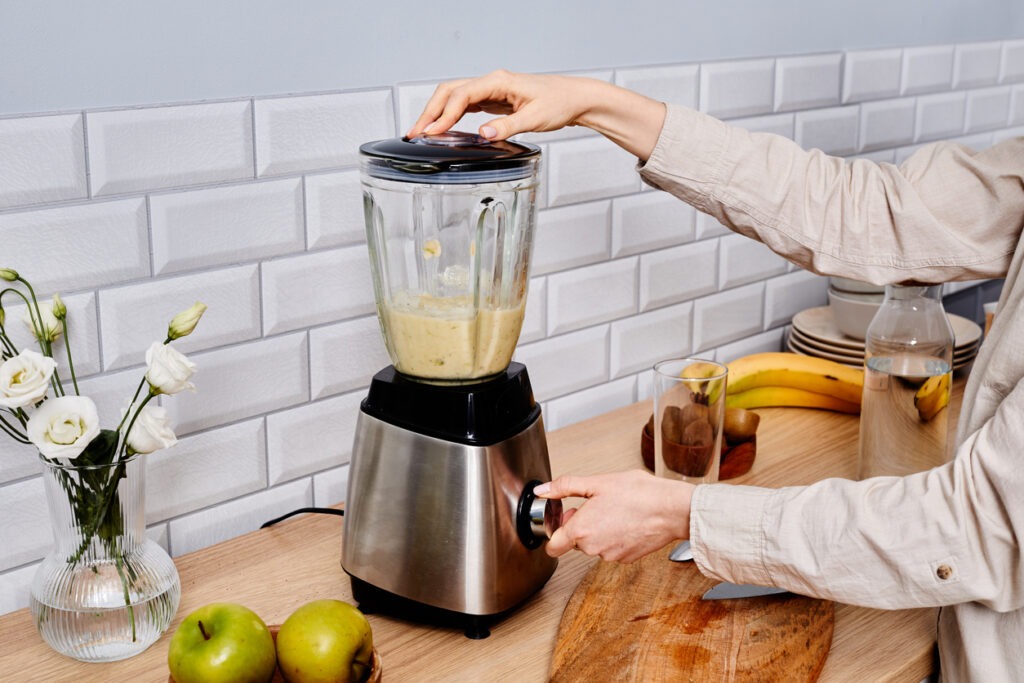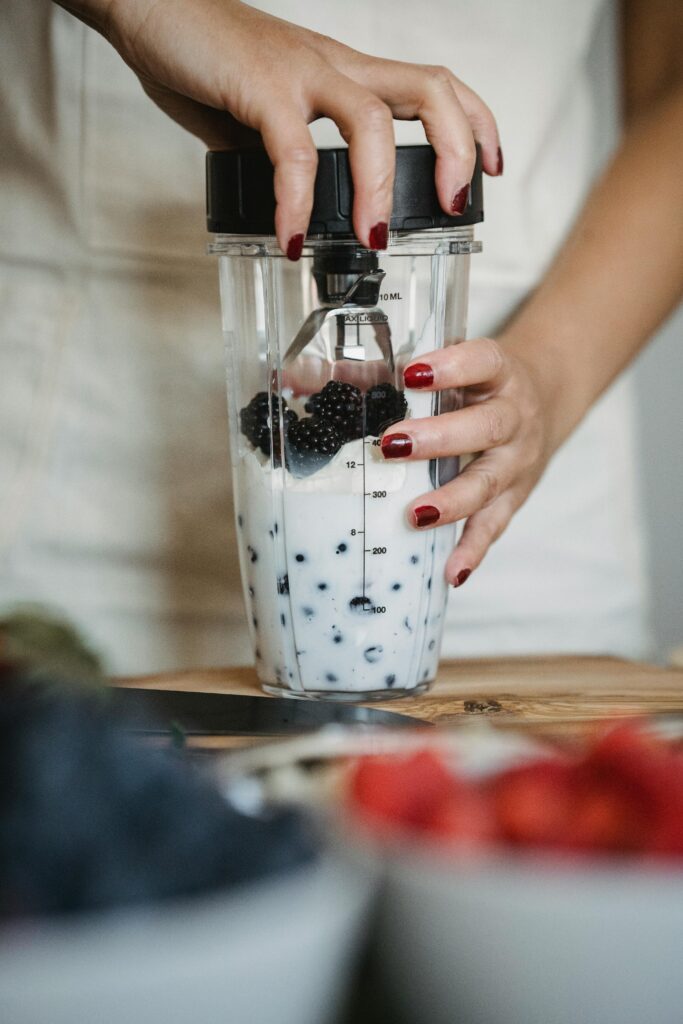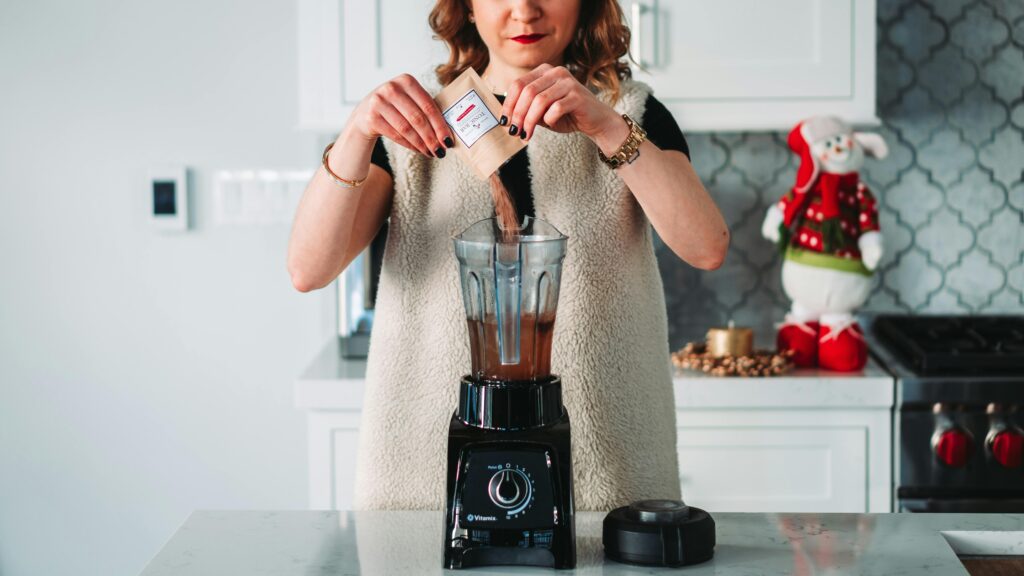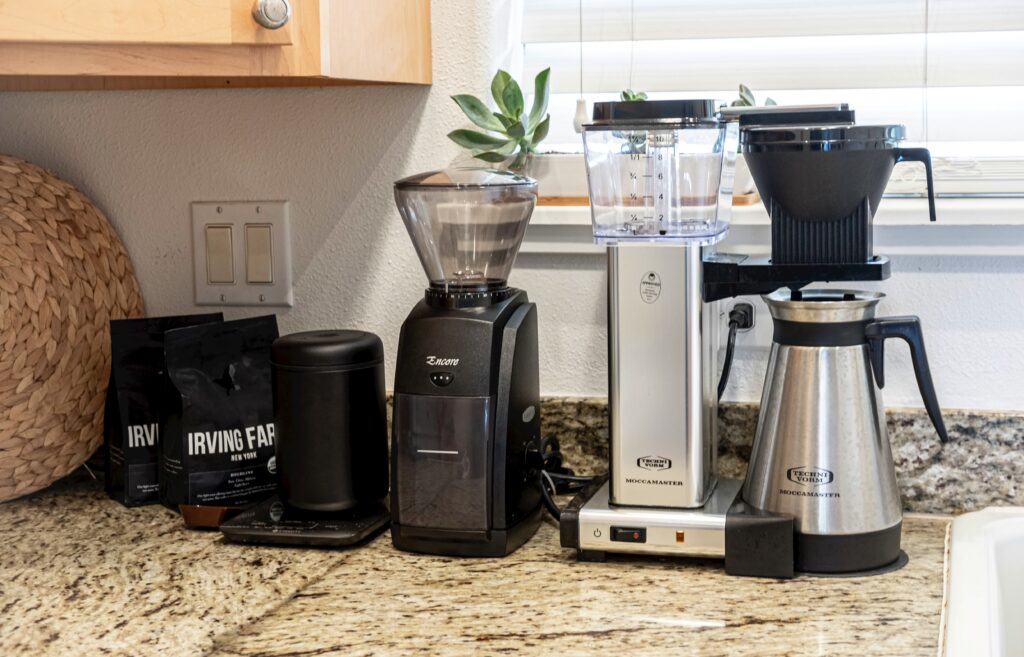You might not know that Stephen Poplawski’s motivation to invent the blender in 1922 stemmed from more than just a desire to mix drinks. His invention, initially designed to cater to the burgeoning demand for soda fountain drinks, particularly powdered malt beverages, was a response to a specific culinary need of the time.
Yet, this was just the beginning of a journey that would see the blender evolve into an indispensable kitchen appliance. By exploring the context of Poplawski’s innovation, you’ll uncover how a simple idea not only transformed the way beverages were prepared but also set the stage for a culinary revolution.
How did this invention influence the culinary arts, and what drove Poplawski to create it? Let’s examine the impact of his vision on our kitchens today.
Early Life of Poplawski
Stephen Poplawski, born in 1885 in Poland, embarked on a journey that led him to Racine, Wisconsin, where his invention of the blender would revolutionize kitchen appliances. Settling in this vibrant community, you can imagine his pursuit of the American dream, which was about to take a significant turn. Working as a salesman for Arnold Electric Company, Poplawski found himself in the perfect position to blend his innovative ideas with the emerging electric appliance market.
Your curiosity might pique at how Poplawski, amidst his sales duties, saw a gap in the market that no one else did. In 1922, his lightbulb moment led to the creation of the first electric blender. This wasn’t just any invention; it was a breakthrough that would change the way people prepared food and beverages forever. You’re right to think that Poplawski’s background in sales, combined with his keen observation skills, played a crucial role in identifying the potential of such a device.
The Need for Innovation
You might wonder why Stephen Poplawski felt the need to invent the blender back in 1922. His innovation wasn’t just about blending fruits and vegetables; it was about sparking culinary creativity, simplifying kitchen tasks, and accelerating drink preparation in an era thirsty for efficiency.
Let’s explore how this invention not only revolutionized the food and beverage industry but also made a lasting impact on both commercial and household kitchens worldwide.
Sparking Culinary Creativity
In 1922, the invention of the blender by Stephen Poplawski opened a new chapter in culinary creativity, demonstrating the vital role of innovation in the kitchen. By crafting a device specifically to blend fruits and vegetables efficiently, Poplawski didn’t just streamline beverage creation for soda shops; he revolutionized food preparation.
The blender’s creation marked a significant leap in culinary technology, enhancing the possibilities for creating diverse recipes. It allowed for the quick and effective mixing of ingredients, pushing the boundaries of what could be achieved with food.
Poplawski’s innovative blender design laid the foundation for modern kitchen appliances, inspiring future advancements in blending technology. This leap forward showed that with the right tools, culinary creativity knows no bounds.
Simplifying Kitchen Tasks
Building on the revolution Poplawski started in the kitchen, the blender’s invention also significantly simplified various culinary tasks, making it a crucial tool for innovation.
Before Poplawski’s time, preparing meals often meant labor-intensive methods to blend fruits and vegetables. But with the creation of the blender in 1922, you suddenly had a way to reduce solid foods into liquid form effortlessly, streamlining the process of making smoothies, soups, and sauces.
This wasn’t just about convenience; it was about transforming how you approached cooking and food preparation. Poplawski’s blender addressed the need for an efficient and effective method to handle these kitchen tasks, fundamentally changing the culinary landscape.
It wasn’t just another gadget; it became an indispensable part of modern cooking, paving the way for further advancements in kitchen technology.
Accelerating Drink Preparation
Stephen Poplawski’s invention of the blender in 1922 revolutionized drink preparation, meeting the urgent need for quicker and more efficient methods in soda shops and beyond. With the creation of this innovative device, Poplawski paved the way for a new era in the beverage industry. Here’s why his blender revolutionized drink preparation:
- Efficiency: The blender allowed for the swift blending of fruits, vegetables, and ice, significantly reducing preparation time.
- Consistency: It ensured the uniform mixing of ingredients, delivering a consistent taste and quality in every drink.
- Convenience: Poplawski’s invention catered to the growing demand for fast and convenient beverage options, transforming how drinks were made and served.
Thanks to Poplawski’s pioneering work, you can now enjoy your favorite blended beverages with ease and speed.
Experimentation and Design
Through experimentation and innovative design, Poplawski perfected a device that transformed how we prepare beverages and foods. In 1922, he invented the blender with a singular aim: to blend fruits and vegetables into liquid form efficiently. His journey wasn’t just about creating a new kitchen gadget; it was about revolutionizing the way we consume and prepare our meals. The essence of his invention lay in its ability to puree and emulsify ingredients, making it indispensable in soda shops for concocting malts and milkshakes, and later, a household staple.
| Blender Feature | Purpose |
|---|---|
| Rotating Agitator | To efficiently puree and emulsify ingredients. |
| Container on Stand | Facilitates easy addition of ingredients. |
| Motor | Powers the agitator for consistent blending. |
Poplawski’s design cleverly combined practicality with efficiency. The rotating agitator was a game-changer, placed strategically within a container on a stand powered by a motor. This setup ensured that fruits and vegetables could be transformed into a liquid form with ease, marking a significant leap in food preparation technology. His experimentation didn’t just lead to a new device; it pioneered a new way of thinking about what a kitchen could do.
The First Blender Model
Poplawski introduced the world to the first blender model in 1922, revolutionizing how we blend fruits and vegetables for health drinks. This invention wasn’t just about making beverages; it was a leap forward in food preparation technology. Before this, blending ingredients into smooth liquids was a labor-intensive process, often yielding less than perfect results. The introduction of Stephen Poplawski’s blender model changed all that.
At the heart of this invention was a rotating agitator, ingeniously placed inside a beverage container on a stand equipped with a motor. This design was simple yet effective, enabling the blender to mix ingredients thoroughly and efficiently. Here’s what made it so groundbreaking:
- Efficiency: The blender’s ability to blend ingredients into smooth liquids quickly was unprecedented.
- Versatility: Although initially used in soda fountain shops for malted milkshakes, its potential for various recipes was quickly recognized.
- Innovation: The concept of a motor-driven rotating agitator in food preparation was novel, setting the stage for future kitchen appliance innovations.
Poplawski’s blender model wasn’t just a new kitchen gadget; it represented a significant shift in how beverages and food items were mixed and prepared, making it a cornerstone in the evolution of kitchen appliances.
Patenting the Invention
In 1922, the landscape of kitchen appliances was forever changed when the blender, a novel invention for blending fruits and vegetables, was patented by its creator. This marked a significant milestone in the realm of culinary tools. Stephen Poplawski, the mind behind this groundbreaking invention, took a decisive step by patenting his creation. This patent wasn’t just a formal document; it was a testament to the innovative leap in blending technology.
By focusing on the liquefier blender’s unparalleled ability to process and puree a variety of ingredients, Poplawski’s patent highlighted the invention’s unique contribution to simplifying and enhancing food and beverage preparation. His design revolutionized the way ingredients were mixed and processed, integrating it all into a single, efficient appliance. This pivotal move set a solid foundation for the future of blending technology.
The patenting of the blender by Poplawski underscored the importance of protecting intellectual property. It not only secured his invention but also paved the way for future advancements in blending appliances. Through this action, Poplawski ensured that his innovative approach to blending technology was acknowledged and preserved, marking a significant moment in the history of kitchen appliances.
Challenges and Solutions
Facing the task of revolutionizing kitchen convenience, Stephen Poplawski tackled significant engineering hurdles to invent the blender. He aimed to address the need for efficient and convenient food preparation in households. This goal led him to conceive a device that could quickly process ingredients into liquid form. Poplawski’s journey wasn’t without its challenges, but his innovative spirit and determination paved the way for a groundbreaking invention.
Here’s how Poplawski invented the blender and overcame the obstacles:
- Engineering Challenges: The primary hurdle was designing a device capable of turning solid fruits and vegetables into liquid efficiently. Poplawski’s solution was a rotating agitator within a beverage container, powered by a motor. This design showcased his inventive approach to problem-solving.
- Versatility and Convenience: Poplawski’s blender revolutionized food preparation by offering a quick and easy way to blend ingredients. This versatility made it an indispensable tool in kitchens.
- Consumer Demand: Recognizing the growing need for efficient kitchen appliances, Poplawski’s foresight in meeting consumer demands was crucial. His invention laid the foundation for widespread adoption in homes and commercial settings, reflecting his deep understanding of market needs.
Through overcoming these engineering challenges, Poplawski invented a device that revolutionized the way people prepared food, emphasizing the importance of convenience and efficiency in kitchen appliances.
Impact on Culinary Arts
You’ve seen how Stephen Poplawski’s blender invention transformed food preparation and boosted culinary creativity. This tool has made it easier for you to blend fruits and vegetables into liquid form, enhancing the flavor and texture of your dishes. Let’s explore how this innovation has become a cornerstone in kitchens worldwide, revolutionizing the culinary arts.
Enhancing Food Preparation
Stephen Poplawski’s invention of the blender in 1922 notably enhanced the culinary arts by simplifying the process of creating smooth, blended ingredients for a variety of dishes and drinks. By introducing this innovative appliance, you now enjoy a revolutionized way of food preparation that focuses on efficiency and convenience.
Consider the following impacts on culinary arts:
- Time-saving: You can blend fruits and vegetables in moments, significantly reducing prep time.
- Consistency: Achieving smooth textures, crucial for soups, sauces, and smoothies, is now effortless.
- Versatility: The blender allows you to experiment with a wide range of ingredients, enhancing your culinary versatility.
Poplawski’s blender has indeed set a new standard in food preparation, making it an indispensable tool in modern kitchens.
Culinary Creativity Boost
The invention of the blender by Stephen Poplawski opened up a world of culinary creativity, allowing chefs and home cooks alike to explore new recipes and flavor combinations with unprecedented ease. This invention revolutionized food preparation, turning fruits and vegetables into liquid form swiftly.
It wasn’t just about making smoothies; the blender enabled culinary artists to experiment, blending textures and flavors in ways that were previously unimaginable. With the blender, creating smooth and consistent mixtures for various dishes and beverages became a breeze, expanding the possibilities for soups, sauces, and purees.
The introduction of the blender sparked a wave of creativity in the kitchen, leading to innovative culinary techniques and flavor profiles that continue to delight and surprise us.
Evolution of Blender Technology
Over the years, blender technology has undergone significant transformations, evolving from a simple tool for making malts and milkshakes into a multifunctional kitchen essential. When Stephen Poplawski invented the blender in 1922, he set the stage for a revolution in how we prepare food. This was just the beginning of blender evolution, which turned this appliance into a cornerstone of modern kitchen appliances.
As you dive deeper into the history, you’ll discover a few key milestones in the evolution of blender technology:
- Introduction of Multiple Speeds: The ability to adjust the speed allowed for more precise blending, accommodating a variety of ingredients and textures.
- Expansion of Functions: Blenders are now capable of crushing ice, making nut butter, and even processing dough, far beyond their original purpose.
- Incorporation of Advanced Materials and Technology: With the use of durable, food-safe materials and the integration of digital controls, blenders have become safer, easier to clean, and more efficient.
Stephen Poplawski’s initial design laid the groundwork, but it’s the continuous innovation that has made blenders indispensable in our kitchens, transforming how we create everything from smoothies to soups.
Poplawski’s Legacy
You’ve seen how Stephen Poplawski’s invention changed food preparation, but let’s consider its broader impact. His blender didn’t just revolutionize soda shops; it transformed home kitchens and the way we think about modern appliances.
Now, we’ll explore how Poplawski’s legacy continues to influence our culinary practices and the evolution of kitchen gadgets.
Revolutionizing Home Kitchens
Stephen Poplawski’s invention of the blender in 1922 forever transformed how we prepare food in our kitchens, making it quicker and more efficient. By introducing this innovative appliance, he revolutionized home kitchens in several key ways:
- Simplified Cooking Processes: You no longer need to spend hours manually chopping or mashing ingredients. A blender does it in seconds.
- Enhanced Culinary Creativity: It opened up a world where you can experiment with smoothies, soups, and sauces, pushing the boundaries of traditional recipes.
- Promoted Healthy Eating: Making it easier to blend fruits and vegetables encouraged more people to incorporate nutritious smoothies and purees into their diets.
Poplawski’s invention wasn’t just a tool; it was a catalyst that changed how you cook and enjoy food at home.
Impact on Modern Appliances
Building on the revolution in home kitchens, Poplawski’s blender also set the stage for major advancements in modern appliances. His blender design wasn’t just about blending fruits and vegetables efficiently; it revolutionized food preparation, making it smoother and more consistent.
This innovation wasn’t just a leap forward in blending technology; it laid the groundwork for the future of kitchen technology. By showcasing the importance of innovation, Poplawski’s invention has a lasting impact, transforming how we prepare food and beverages in both households and commercial settings.
His legacy as a pioneer isn’t just about the blender itself but about paving the way for the widespread use of innovative appliances that continue to shape our kitchens today.
Future of Blending Technology
As blending technology continues to evolve, we’re seeing an array of advanced features that promise to revolutionize how we prepare our foods and beverages. The journey from simple mixing devices to today’s sophisticated machines underscores a future where blenders become an indispensable part of culinary artistry. With companies like Blendtec leading the way in innovation, you’re witnessing the dawn of a new era in food preparation.
Here’s what to expect:
- Sound-Reducing Enclosures: You’ll be able to blend at any hour without worrying about waking up the household or disturbing neighbors. This advancement not only enhances user experience but also opens up possibilities for use in quiet environments like open-plan kitchens and offices.
- Computerized Controls: Expect precision at your fingertips. These controls will offer unparalleled consistency in texture and flavor, making every blend perfect and replicable. Whether it’s for a smoothie or a complex sauce, you’ll achieve your desired outcome every time.
- Specialized Blending Jars: Following the footsteps of the WildSide jar, future blenders will likely introduce more specialized jars designed for specific tasks, eliminating the need for manual intervention and making the blending process even more efficient.
As blenders continue to incorporate these advanced features, your food preparation process won’t only become easier but also more creative and enjoyable.
Conclusion
Stephen Poplawski’s invention of the blender in 1922 forever changed the culinary world. By aiming to simplify the process of making malted beverages, he didn’t just innovate; he sparked a revolution. His initial design led to the evolution of blending technology, affecting both commercial and household kitchens globally. Today, as we witness the continuous advancement in blenders, Poplawski’s legacy lives on.
His pioneering spirit paved the way for the future, making him an enduring figure in culinary history.






